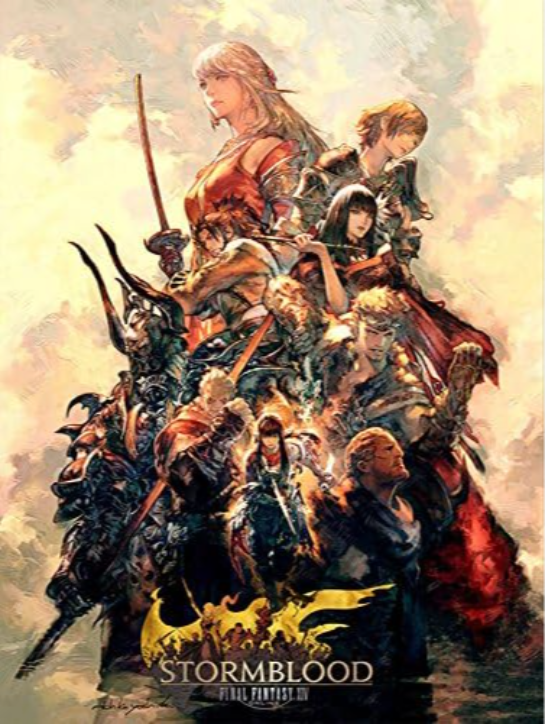Colonialism and Revolution: An Analysis of FFXIV: Stormblood
by Mathew Rosario | 04 Jul 2023
The Bloom Report

The portrayal of colonialism in the realm of fantasy can be a complex issue. It seems almost inevitable that any imagined world would feature some form of dominant power, a central authority exerting control over various regions and frontiers. These dynamics are often represented through stand-in races; humans, orcs, elves, serving as metaphors for racial imperialism, yet offering a layer of plausible deniability. This allows the writer to explore themes of racial conflict without the burden of real-world racism. After all, these races are purely fictional.
The creation of a fantastical race or the portrayal of dominance and subjugation within a narrative is inherently political. Fiction has the capacity to cross over into reality, not just because it employs the language of reality, but because it necessitates it. As readers, we identify and connect. By using a parallel language to mirror the challenges of our world, particularly when our world has a significant history with imperialism, it's crucial that this is done with due regard for the history and culture of the people being indirectly represented.
The portrayal of imperialism in FFXIV: Stormblood, including the mindset of the imperialist, and the experiences of both the victims and those who are either indifferent or complicit, is strikingly direct and unsettling. To understand Stormblood, some background is necessary: The setting of Final Fantasy XIV is the Eorzean continent, home to four major city-states: Gridania, Limsa Lominsa, Ul’dah, and Ishgard. These city-states are all entangled in a conflict with the empire of Garlemald, a power with a militaristic and expansionist agenda that seeks to annex Eorzea.
Two decades before the unfolding of the game's narrative, the Garlemald empire invaded and seized control of Ala Mhigo, the fifth nation of Eorzea. Despite forming an alliance, it takes the Eorzean nations an expansion and five patches to break the deadlock with the empire, which has grown powerful and self-satisfied. Ala Mhigo, serving as XIV's in-game equivalent of the Middle East, is populated by non-playable characters (NPCs) who are predominantly dark-skinned, wear dreadlocks and natural hairstyles, and speak with distinctive northern English accents. A portion of A Realm Reborn's storyline takes the player to a dilapidated refugee camp known as Little Ala Mhigo, named after their now subjugated homeland. The camp, nothing more than a cave filled with brown canvas tents and bonfires, is home to displaced residents who wait in despair, enlist in the Ul’dahn military, or join the ranks of restorationists in a futile rebellion.
Regarded as mere commodities, the most able-bodied among them often fall prey to avaricious traders or brothel owners. The elderly and infirm are either killed or subjected to even more horrifying circumstances.
Stormblood's exploration of the face of imperialism and its impacts is remarkably well-executed. As you traverse the various regions, you encounter a land that has been exploited and drained of its resources. It's a haunting echo of a past that was once more prosperous. Vandalized statues, desecrated temples, and dispirited inhabitants paint a grim picture. At its core, imperialism is a hostile, exploitative relationship between an invading force and the indigenous population, with the latter being violently deprived of their resources, people, and cultural identity.
As the colonized, one is barred from ascending to the colonizer's class. This creates a group of people who are owned by a body of governance, yet yield none of the benefits of being a citizen. They are fed the illusion of full citizenship and placed in roles designed to perpetuate the colonial system. Native culture and identity are suppressed and dismissed. As conditions deteriorate under imperial dominance, desperate individuals strive for improvement, only to be manipulated as local pawns. The tighter they fasten the proverbial chain around their own necks, the greater the chance they have of experiencing a marginally improved life.
In Final Fantasy XIV, grounding Garlemald's justification for rule in racial theory confronts colonialism in its most egregious manifestations, but not in one in which we cant understand. The inclusion of local uprising, international support, and guerilla warfare make the liberation effort one that bears striking resemblance to events seen in our world today. The strategies employed bear a striking resemblance to those used by Fidel Castro's July 26th Movement against Fulgencio Batista.
Yet FF does not stray away from showing its players the horrors that level of violence can lead to. It makes a point to let the player know that there isn't always a clear line between what is right and wrong and that even the oppressed can commit crimes nearly as bad as the oppressor, sometimes worse. That's not to say the game takes the side of the Empire, on the contrary, it is made explicitly clear that those who deprive others of their freedom are not above defiance.
Stormblood sets a clear goal of dismantling imperialism, navigating the political landscape with a straightforward moral compass: the empire is depicted as expansive and malevolent, while the resistance is portrayed as omnipresent and virtuous.
Recent Blogs
Recent Blogs

Reviews
Game Review: IQ Circle

Biographies and Interviews
Catching up with Eric Olsen, The Inventor of Flip 7 and Co-Creator of Messy Table Games

Reviews
Book Review: Happytecture by Anna Devís & Daniel Rueda

Biographies and Interviews
From Stage Lights to Game Nights: McMiller’s David & Julian on Shark Tank (Dec 10th), Viral Success & Building a Business With Your Husband

Press Release
Leslie Scott (creator of Jenga) announces the launch of BOUNDLESS PLAY
See more
Recent Wiki

BOOK REVIEWS
Toy Review: Monster Jam Smash & Bash Grave Digger Monster Truck

BOOK REVIEWS
Toy Review: Marshall's Rapid Rescue Fire Truck

COMPANIES
Zigazoo Secures Partnership with YouTube Star Like Nastya to Inspire Millions of Kids

PEOPLE
A Legacy of Play: Inside the Carlson Family’s Multi-Generational Journey Through the Toy Industry

COMPANIES
Radio Flyer Studios Announces the Launch of its First Original Animated Series, Max & Maple: The Can-Do Kids
See more
POP's Got Talent

POP Entertainment
Randy Klimpert Shares his Ukulele Collection

POP Entertainment
Steve Casino Peanut Art

POP Entertainment
Everyone's Talking about POP!

POP Entertainment
Princess Etch - a Multi-Talented Etch A Sketch Artist

POP Entertainment
Joseph Herscher of Joseph' s Machines.
See more
Recent POPcast

Hidden Role: The Brains Behind your Favorite Games
Connie Vogelmann designed Apiary & Wyrmspan!

Hidden Role: The Brains Behind your Favorite Games
Bob Fuhrer... Is THE Crocodile Dentist!

Hidden Role: The Brains Behind your Favorite Games
Tom Dusenberry... Bought Atari, Wizards of the Coast, and Avalon Hill!

Hidden Role: The Brains Behind your Favorite Games
Matt Leacock created Pandemic... the game!

Hidden Role: The Brains Behind your Favorite Games
Scott Brown and Tim Swindle... are Launching a New Sport!
See more
POPDuos

POPDuos: Interviews with Legends and Leaders
POPDuo: Richard Dickson, Mattel’s President & COO, and Kedar Narayan, Young Inventor Challenge AMB

POPDuos: Interviews with Legends and Leaders
POPDuo: Will Shortz and Josh Wardle

POPDuos: Legends and Leaders Explore Creativity
POP Duo: Elan Lee, Co-Founder, Exploding Kittens.and Jeff Probst, Host and Exec Producer, Survivor

POPDuos: Legends and Leaders Explore Creativity
POP Duo: David Fuhrer, MNG Director, Blue Sq Innovations & Shawn Green, past Dodgers & Mets MLB Star

POPDuos: Legends and Leaders Explore Creativity
POP Duo: Bob Fuhrer, Founder, Nextoy and Tom Fazio, Golf Course Designer
See more















